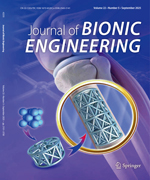Scientists have long looked to nature and biology in order to understand and model solutions for complex real-world problems. The study of bionics bridges the functions, biological structures and functions and organizational principles found in nature with our modern technologies, numerous mathematical and metaheuristic algorithms have been developed along with the knowledge transferring process from the lifeforms to the human technologies. Output of bionics study includes not only physical products, but also various optimization computation methods that can be applied in different areas. Related algorithms can broadly be divided into four groups: evolutionary based bio-inspired algorithms, swarm intelligence-based bio-inspired algorithms, ecology-based bio-inspired algorithms and multi-objective bio-inspired algorithms. Bio-inspired algorithms such as neural network, ant colony algorithms, particle swarm optimization and others have been applied in almost every area of science, engineering and business management with a dramatic increase of number of relevant publications. This paper provides a systematic, pragmatic and comprehensive review of the latest developments in evolutionary based bio-inspired algorithms, swarm intelligence based bio-inspired algorithms, ecology based bio-inspired algorithms and multi-objective bio-inspired algorithms.

 Table of Content
Table of Content
 Table of Content
Table of Content